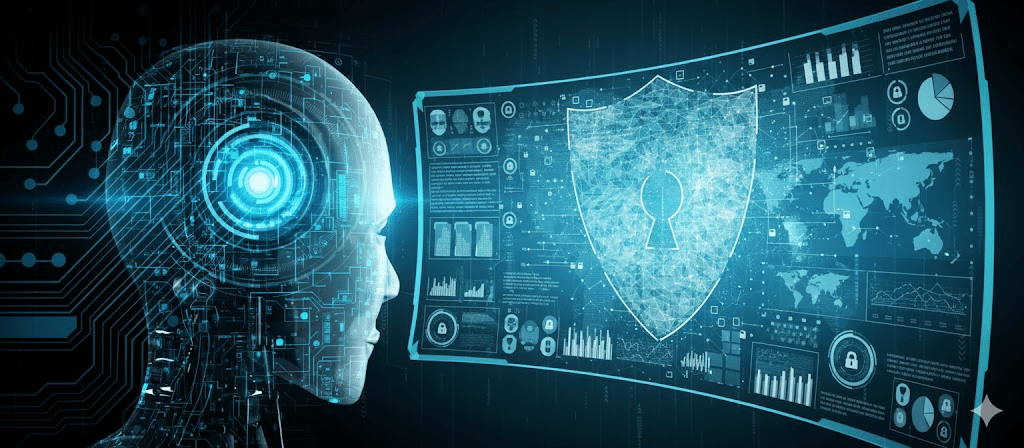The fusion of Artificial Intelligence (AI) with cybersecurity heralds a new, transformative era of digital defense mechanisms. AI is now poised to combat complex, rapidly evolving cyber threats with unprecedented efficiency, speed, and precision. It has moved beyond a mere innovation to become a critical, indispensable defense mechanism, adept at identifying and neutralizing threats that traditional systems often miss.
However, this powerful alliance between machine intelligence and digital defense is not without its complexity. It brings forth intricate ethical dilemmas that fundamentally challenge the core principles of privacy, autonomy, fairness, and accountability in our digital society. As we enthusiastically embrace this technological advancement, it is crucial to strike a harmonious and deliberate balance. We must ensure that the relentless march of technological progress does not inadvertently tramble the foundational values and rights that underpin a just and equitable society.

This comprehensive exploration delves deep into the landscape of AI ethics and cybersecurity, examining the opportunities AI presents and the urgent ethical and regulatory considerations that must be addressed to responsibly harness its capabilities. The need for a cautious yet forward-thinking approach has never been more pressing.
🤖 AI in Cybersecurity: From Novelty to Necessity
AI’s role in cybersecurity has fundamentally transformed. It is no longer an experimental feature but an operational necessity, driven by the sheer volume and sophistication of modern cyber threats. AI and Machine Learning (ML) algorithms excel at analyzing vast quantities of data—far beyond human capacity—to detect patterns indicative of malicious activity, often in real-time.
The Capabilities of AI in Digital Defense
AI systems enhance cybersecurity across multiple vectors:
- Threat Detection and Prediction: AI can rapidly process network traffic, identify anomalies, and predict potential attack vectors with far greater speed than human analysts. It uses historical data to learn the “normal” behavior of a system, making deviations—the tell-tale signs of a cyberattack—instantly recognizable.
- Automated Incident Response (AIR): AI facilitates the immediate containment and mitigation of threats. Once a threat is identified, an AI system can automatically quarantine infected files, isolate compromised network segments, or even deploy patches, reducing the window of opportunity for attackers from hours to seconds.
- Vulnerability Management: AI can scan code and applications for weaknesses and configuration errors, prioritizing vulnerabilities based on the actual threat landscape and the system’s importance.
- User and Entity Behavior Analytics (UEBA): By establishing baselines for individual user behavior, AI can spot compromised accounts or insider threats much more effectively than simple rule-based systems.
The Opacity Paradox and Cautionary Concerns
Despite these remarkable benefits, the rapid integration of AI raises significant ethical and practical concerns. The primary challenge is the Opacity Paradox, often referred to as the “Black Box” problem. The decision-making processes of complex AI algorithms—particularly deep neural networks—are often so intricate that even their creators cannot fully explain why a system classified a certain action as a threat.

This lack of transparency undermines trust and complicates accountability. If an AI system makes a critical security decision—such as isolating a major network or flagging a senior executive—and that decision proves erroneous or discriminatory, tracing the cause, fixing the flaw, and assigning responsibility becomes incredibly difficult. This highlights the urgent need for a cautious, measured approach, ensuring that AI’s capabilities are not deployed blindly but with robust human oversight and ethical frameworks.
⚖️ Ethical Considerations in AI-Driven Security
The deployment of AI in cybersecurity ventures into ethically charged territory where the benefits of enhanced security must be constantly and carefully weighed against the potential infringements on fundamental human rights. This means that every step forward must be accompanied by a reevaluation of our ethical compass.
The Security vs. Autonomy Dilemma
The prospect of AI-driven surveillance systems capable of monitoring and analyzing data on an unprecedented scale prompts a fundamental reevaluation of the balance between national or corporate security and individual rights. Enhanced security measures often necessitate deeper access to user behavior, communication patterns, and personal data.
- Data Aggregation and Profiling: AI thrives on large datasets. The more data it consumes, the better it becomes at threat detection. However, this collection process inherently means building increasingly detailed profiles of users, employees, and citizens, which can be misused or abused.
- Preemptive Action and False Positives: AI’s ability to predict threats allows for preemptive security actions. Yet, if an AI’s prediction is a false positive—wrongly flagging an innocent individual’s behavior as malicious—it can lead to unwarranted investigation, surveillance, or even loss of employment, directly infringing upon personal autonomy and freedom.
Organizations must adopt a nuanced approach, leveraging AI’s threat detection strengths while implementing robust safeguards to protect individual autonomy and dignity. The goal is to maximize security outcomes without creating a pervasive surveillance state, demanding clear ethical boundaries for AI’s application.
🔒 Privacy Challenges and AI’s Data Paradox
AI’s remarkable data analysis capabilities present a profound paradox in cybersecurity. While AI offers powerful defenses against cyber threats, its very prowess in sifting through extensive data sets raises immediate and significant privacy concerns.
Inadvertent Exposure and Consent Erosion
In their relentless quest to identify subtle, complex threats, AI systems can inadvertently expose sensitive information, potentially infringing on an individual’s right to privacy and the crucial principle of consent.
- Sensitive Data Access: AI systems designed to monitor network traffic or communication metadata for anomalies may, in the process, access or process privileged information, such as medical records, financial details, or confidential business communications.
- Inferential Profiling: AI does not need direct access to personal data to compromise privacy. It can infer highly sensitive personal attributes (like political views, health status, or emotional state) simply by analyzing non-sensitive behavioral data and communication metadata.
Implementing Robust Privacy Safeguards
Striking the right balance necessitates a firm commitment to privacy-enhancing technologies and methodologies:
- Federated Learning: A technique where AI models are trained on decentralized data held locally on devices or in distinct organizational siloes. Only the model updates—not the raw data—are shared, effectively minimizing data exposure and enhancing privacy. You can read more about how this is applied in cybersecurity here.
- Differential Privacy: This involves mathematically adding a small amount of “noise” to datasets before training the AI model. This makes it impossible to identify any single individual’s contribution to the dataset, thereby protecting individual privacy while still allowing the AI to learn general patterns. For an official guide on implementing and evaluating this technique, see the resource here.
- Data Minimization: Adopting a strict policy of collecting, storing, and processing only the absolute minimum amount of data required for a security function.
- Homomorphic Encryption: An advanced cryptographic method that allows AI algorithms to perform computations on encrypted data without ever having to decrypt it.

Through these measures, organizations can genuinely leverage AI’s strengths while implementing robust safeguards to protect individual privacy and uphold the principles of data ethics.
🧩 Accountability and Transparency: The Black Box Dilemma
The enigmatic nature of many AI algorithms—marked by their immense complexity and inherent lack of transparency—poses the most significant challenge to trust in AI-driven cybersecurity. This complexity makes it increasingly difficult to attribute accountability when AI systems, entrusted with critical security decisions, fail or cause harm.
The Need for Explainable AI (XAI)
To maintain trust and ensure that AI remains a verifiable asset rather than an inscrutable black box, the demand for transparent and explainable AI (XAI) systems is paramount. You can explore the role of XAI in cybersecurity and how it bridges the gap between AI decisions and human understanding here.
- Human Scrutiny and Validation: Transparency ensures that the decisions made by AI can be understood, scrutinized, and validated by human oversight. Security teams must be able to ask: “Why did the system flag this particular server?” and receive a clear, human-understandable explanation.
- Debugging and Improvement: When an AI fails or an attacker bypasses the system, transparency is vital for post-mortem analysis. Without XAI, debugging the system and improving its defense capabilities becomes a process of guesswork.
- Legal Compliance: In many regulatory environments, the legal and ethical responsibility for an AI’s output rests with the organization deploying it. Without transparency, establishing a clear chain of accountability in the event of a security failure or a privacy breach caused by the AI becomes a legal nightmare.
Developing and deploying XAI is a cornerstone of responsible AI governance, safeguarding digital landscapes against evolving cyber threats while upholding the fundamental principles of trust and liability.
🌍 Regulatory Frameworks, Bias, and Fairness
The presence of bias in AI algorithms poses a significant, often hidden, challenge to the fairness and equity of AI-driven cybersecurity measures, casting a long shadow over their integrity.
The Origins and Impact of Algorithmic Bias
Biases can emerge from various sources, contaminating the entire system:
- Skewed Training Data: If the data used to train the AI disproportionately represents one demographic group or one type of attack scenario, the resulting model will perform poorly or make biased judgments when encountering underrepresented data.
- Flawed Algorithmic Design: The choice of features, the weighting of certain parameters, or the selection of the optimization function can inadvertently bake biases into the system, resulting in discriminatory outcomes that disproportionately affect certain groups or individuals.
Such biases not only undermine the principles of fairness and equity but also weaken the overall security posture. A biased AI is a blind AI; it overlooks threats targeting populations or systems it was not adequately trained on, creating exploitable security gaps.
The Path to Equitable AI Solutions
Addressing this critical issue requires a dedicated commitment to developing AI systems that prioritize not only intelligence but also equity. This necessitates robust and ongoing processes:
- Rigorous Testing and Auditing: AI systems must undergo continuous, independent audits for bias before and after deployment, using test datasets that are intentionally diverse across all relevant variables.
- Data Curatorship: Cybersecurity teams must commit to collecting and curating training data sets that are balanced, representative, and cleansed of historical biases present in real-world security logs.
- Constant Refinement: AI models must be continuously monitored for biased outcomes in the field, and immediate model retraining and refinement are mandatory to ensure that protections are uniformly robust.
In the quest for enhanced cybersecurity, fairness and equity must be integral, non-negotiable components of AI-powered solutions, safeguarding the interests and security of diverse populations without perpetuating bias or discrimination.
⚔️ The Ethical Frontier: AI in Cyber Warfare
The integration of AI into the realm of cyber warfare presents perhaps the most complex ethical dilemma. As AI systems become increasingly autonomous and capable of making critical decisions in the digital domain, the lines between defensive measures (cybersecurity) and aggressive actions (cyber warfare) become dangerously blurred.
Autonomous Decision-Making and Escalation
This development is particularly concerning in the context of national defense strategies, as it raises the specter of cyber conflicts escalating to unprecedented, uncontrollable levels.
- Speed of Conflict: AI-driven attack and defense tools operate at machine speed. An automated, defensive response from one nation’s AI could be instantly perceived as an aggressive action by another nation’s AI, leading to an algorithmic escalation loop that moves too fast for human leadership to control or de-escalate.
- Unintended Consequences: The use of AI-driven weaponry and tactics introduces the potential for vast unintended consequences and collateral damage. An autonomous AI cyber weapon, designed to disable a military system, could inadvertently spread to critical civilian infrastructure, causing widespread societal harm.
Establishing International Norms
Striking the right balance between enhancing national security and maintaining global peace requires a comprehensive reevaluation of international norms and the establishment of clear ethical and legal guidelines governing AI’s role in cyber warfare. You can find detailed discussions on the international legal implications of autonomous weapons systems and cyber operations here.
- The Responsibility Gap: International treaties must clearly define who is responsible when an autonomous AI system initiates a cyberattack or causes harm. Is it the programmer, the commander, the nation-state, or the AI itself?
- Bans on Autonomous Offensive Systems: Many ethicists and policy experts advocate for international agreements that ban the development and deployment of fully autonomous offensive cyber weapons that operate without a human in the loop.
Preventing the inadvertent destabilization of the world order necessitates that the deployment of AI in national security remains strictly within the bounds of responsible and ethical use, prioritizing global stability over technological capability.
💡 Case Studies: Ethical AI in Practice
Real-world applications of AI in cybersecurity not only exemplify the remarkable capabilities of artificial intelligence but also shed light on the ethical challenges and innovative solutions within the field.
Privacy-Enhancing Platforms
One compelling example lies in the development of AI-driven threat detection platforms that prioritize and enhance privacy protections. These platforms employ advanced techniques like cryptography and differential privacy to analyze threat data. They can accurately detect malware signatures and phishing campaigns without requiring access to the original, sensitive content of the emails or files, thus proving that enhanced security does not have to come at the cost of individual privacy.
Bias Mitigation in Threat Modeling
Another successful case involves organizations that utilize AI-based testing harnesses to proactively audit their security models for algorithmic bias. These harnesses simulate attacks from diverse geographical and demographic groups to ensure that the AI model is equally effective at defending all segments of the user base. By actively mitigating the risks of under-representing certain groups in the training data, these systems ensure equitable cybersecurity protection for all users, regardless of their background or location.
🔮 Navigating the Future: Ethics in AI-Driven Cybersecurity
As we look towards the future, the ethical considerations in AI-driven cybersecurity remain a pivotal area of both concern and opportunity. The continuous evolution of AI technologies, coupled with the dynamic, shape-shifting nature of cyber threats, necessitates an ongoing, robust dialogue.
This conversation must actively involve a collaborative ecosystem of technologists, ethicists, policy makers, legal experts, and the broader community. By fostering a multidisciplinary approach to ethical AI governance, we can chart a responsible course through this new landscape. We must ensure that our digital defenses are not only technologically superior and robust but are also fundamentally rooted in the enduring values of justice, respect, human dignity, and the rule of law.
This thorough exploration of AI ethics and cybersecurity underscores the complexity and critical importance of these ethical considerations. As we advance into this new era, the collective wisdom and concerted efforts of all stakeholders will be essential in realizing the immense promise of AI while rigorously safeguarding the ethical principles that underpin our digital society. The challenge is immense, but the opportunity to build a more secure and ethically sound digital future is even greater.






